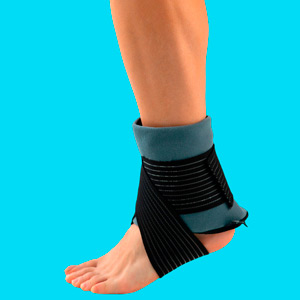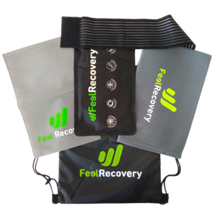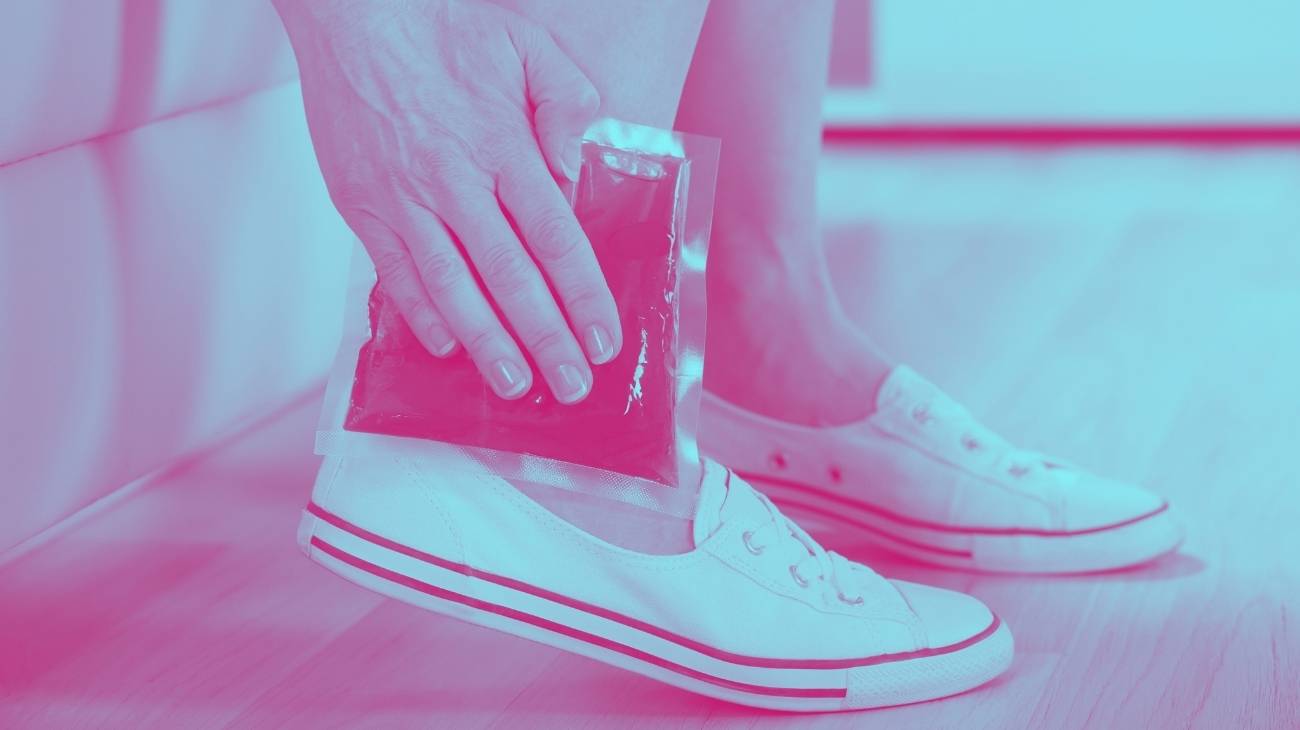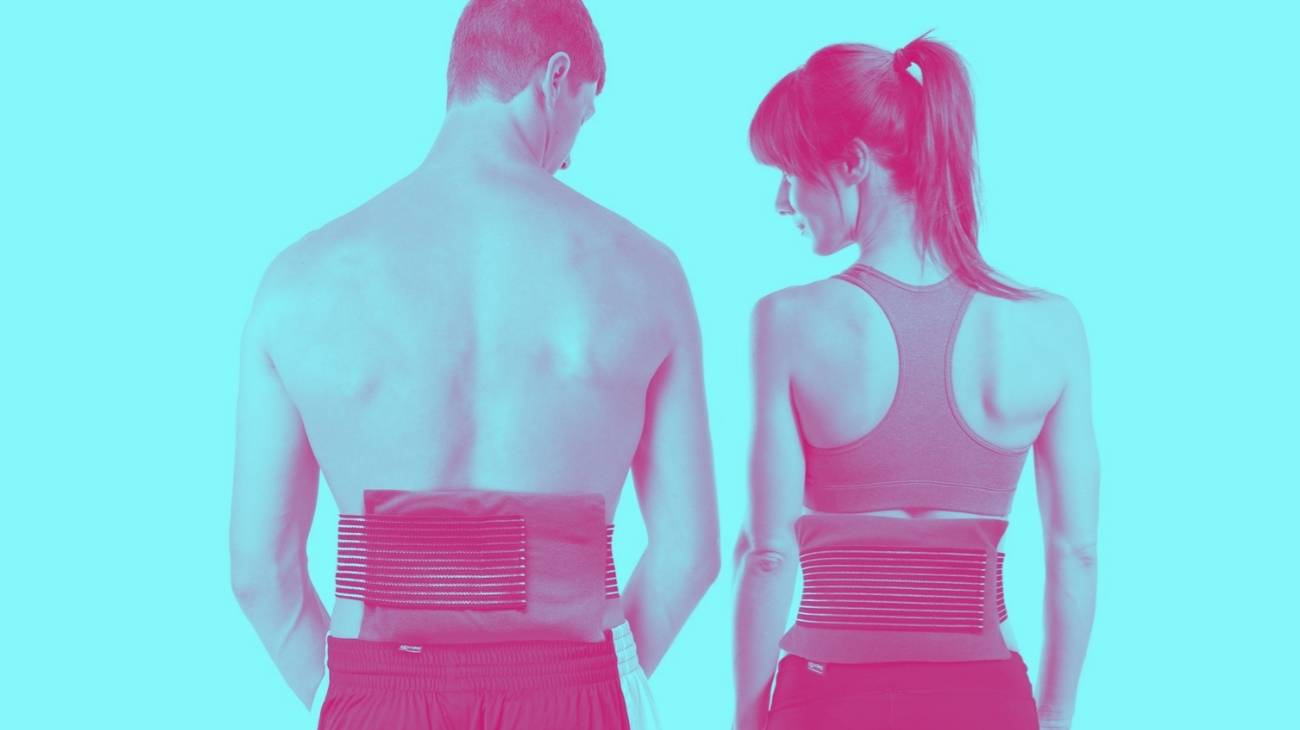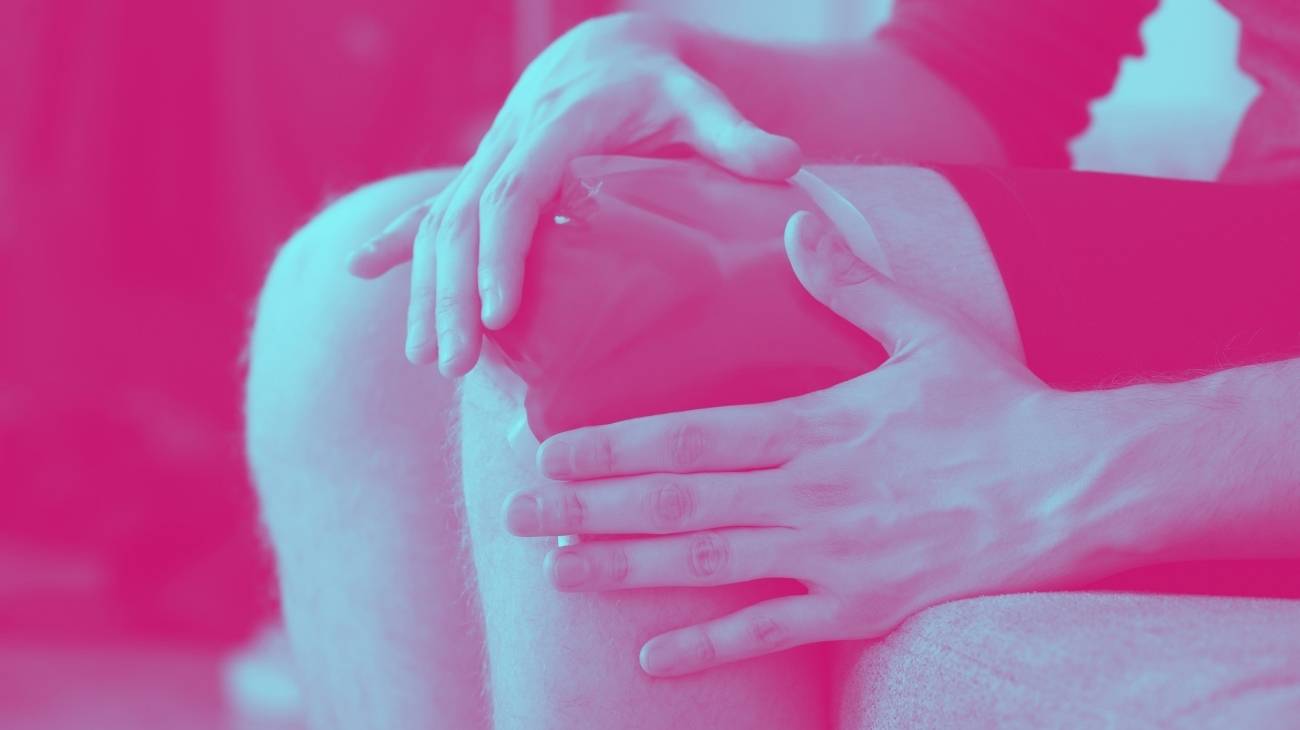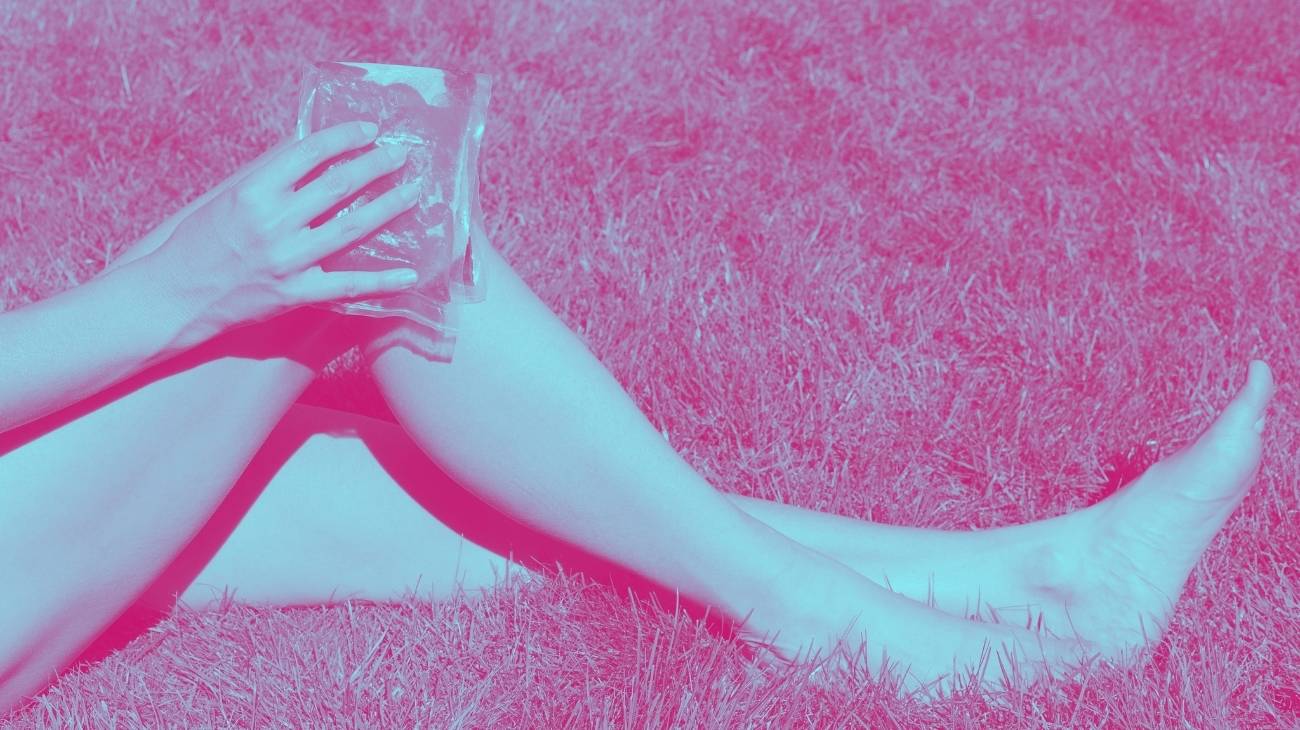- What is the best ice gel packs for ankle pain?
- Video: Types of Hot/Cold Packs
- Types of hot & cold packs you should know about
- What are cold gel packs for the ankles used for?
- Advantages and benefits of hot/cold packs for ankle pain
- How to use reusable hot & cold packs for ankle injuries?
- F.A.Q: Frequently asked questions
Nowadays, many people suffer from ankle injuries due to various causes, such as trauma, sprains, tendonitis, etc. These and other causes of ankle injuries can be very serious. These and other causes can lead to inflammation and pain in the ankle joint.
To relieve ankle pain, we can perform cold therapy with ice gel packs to improve blood circulation and reduce swelling in this area of the body.
What is the best ice gel packs for ankle pain?
- Size: One size fits all
- Colours: Grey and Black
- Material: Breathable
- No. of products: 1 Piece
- Uses: Rehabilitation and sport
- Always Flexible
- High Quality
- Full Pack
- Extra-Strong Velcro
- Ergonomic design
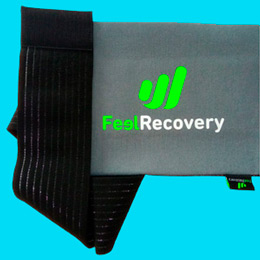
Extra-Strong Velcro
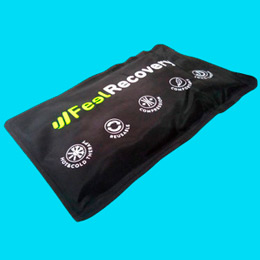
High Quality
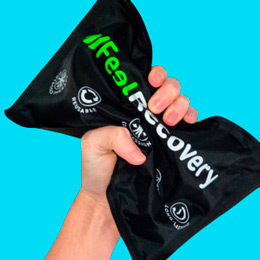
Always Flexible
Gelpacks Direct - Ankle Ice Pack Wrap for Sports Injuries, Plantar Fasciitis and Achilles Tendonitis
- Microwave safe
- Protective cover
- Heat/cold therapy
- Fully adjustable
- Smaller size
- One size only
To apply the heat therapy, simply place the gel pack in the microwave for two minutes. If you want to use cryotherapy, freeze the heating pad in the refrigerator for at least two hours to achieve the necessary temperature. When you combine these alternative treatments you will be able to apply compression by means of the elastic strap and achieve better results. In some cases it may be uncomfortable to use the heating pad.
- Microwave safe
- Fully adjustable
- Voluminous ankle brace
Use the microwave or refrigerator to achieve the desired temperature and efficiently apply the heat or cold therapy. The heating pad with ice pack is suitable for pain relief of sprains, Achilles tendon inflammation and plantar fasciitis, as the compression supports the tender points of the joint. For some users the temperature retention may be insufficient.
- Heat/cold therapy
- Adjustable compression
- Protective cover
- Quality materials
- Not suitable for microwave use
- One size only
Don't forget, support and support are important factors in shortening recovery time for any type of foot disorders, which is an advantage of this elastic ankle brace. It can be used by any adult after physical training or for resting at home, although you have to consider that the quality of the material can irritate the skin.
- Suitable for various areas of the body
- Manual with examples of use
- Not suitable for microwave use
By simply using the refrigerator and microwave you will achieve the therapeutic temperature necessary for vasodilation. Thanks to this, you will reduce inflammation, relieve pain and eliminate bruising. Don't waste any more time and choose a product that will take care of your health forever, although you should consider that the durability of the materials can be inefficient in some cases.
- Microwave safe
- Quality materials
- Hot/cold therapy
- Fully adjustable
- gentle wash
- One size only
You can use it during the summer because the fabric is breathable and evaporates moisture, which helps to improve comfort and prolong the wearing time. The pair of gel packs are reusable each time you use them in the fridge or microwave, so the durability is good. Keep in mind that, in some user situations, the compression was ineffective and uncomfortable to wear.
- Material: Nylon
- Uses: Ankle and Knee
- Type of adjustment: Strap with Velcro
- Cover: Yes
- No. of units: 1
- Extra ice pack
- Adjustable velcro strap
- Not microwaveable
Thanks to this design it is possible to easily use the cold pack together with the bandage, without spilling any liquid . You will be able to more effectively relieve the pain of arthritis, ankle sprains, strains and plantar fasciitis by simply using the heat splint three or four times a day. It is important to keep in mind that the temperature retention may be low due to the material of the water bag.
- Quality materials
- Protective cover for gel pack
- Heat/cold therapy
- Fully adjustable
- Not suitable for microwave
- Bulky design
Choose the time of application of thermotherapy and cryotherapy in each daily session. Swap the two gel sachets after heating in the microwave or cooling in the freezer for direct application to the affected area. It can be used by both men and women without any inconvenience, but keep in mind that its size is not always effective in maintaining compression in all users.
- Heat/cold therapy
- Optimal fit with adjustable pressure
- Not suitable for microwave
For faster effects, complement the cold therapy with thermotherapy by simply heating the thermal pillow in the microwave or cooling it in the fridge. Sprains, swollen feet and Achilles tendonitis will be a thing of the past when you recover with the thermal support with gel packs. In some users the gel pack is not thick enough to maintain the temperature for a long time.
Video: Types of Hot/Cold Packs
Types of hot & cold packs you should know about
What are cold gel packs for the ankles used for?
Cold:
- Sprains
- Strains
- Plantar fasciitis
- Achilles tendinitis
- Trauma
- Dislocated metatarsal
- Bursitis
- Muscle fatigue
Hot:
- Osteoarthritis
- Arthritis
- Cartilage wear and tear
- Diseases of the circulatory system
- Post-operative treatments
- Strengthening of the tissues
- Chronic injuries
- Muscle contractures
Advantages and benefits of hot/cold packs for ankle pain
- Pain relief: Ankles and feet have the task of supporting the total weight of the body and coping with physical strain at home or at work. They also help balance the body and provide support for the legs during sports. All this eventually leads to fatigue and injury, which in most cases will be painful. The design of the bag adapts to the shape of the ankle and foot to relieve pain and symptoms associated with initial discomfort.
- Reduction of inflammation: This is a natural process that splits the affected cells in the joint and foot parts. As these cells divide, they produce fluid that causes the internal tissues to swell. Although this is a normal cycle to protect the affected area, in many cases this swelling causes severe pain. The cold transmitted by the thermal gel pack has an anti-inflammatory effect and prevents complications in the damaged area of the limb.
- Fast recovery: Although it is convenient to use cold in the initial stages of an injury, it should not always be used on injuries. Heat has better properties for a body that needs to recover quickly from a chronic injury. Heat is used on a small scale with heat packs like the one we are presenting today, but also on a large scale with thermotherapy. With this bag, you can reap the benefits of heat therapy and treat old injuries with heat in the comfort of your own home.
- Injury prevention: A good way to prevent re-injury is to apply cold to the ankle when you know you have taken a wrong step or received a hard blow. You often don't notice that your foot is swollen and bruised until the day after a light blow. The gel pack prevents this reaction after exercise, leaving the ankle and foot ready for another day of intense training.
- Compression: in addition to this product, you now have a thick velcro strap that holds the pack to the ankle without slipping off, acting like a compression garment. In case you don't know: Compression is one of the steps in the PRICE method of treating minor injuries. With the gel pouch, you now have the opportunity to administer first aid like a professional physiotherapist. You just have to know exactly how long to apply the cold to avoid complications.
- Improving athletic performance: What is the secret to being the best athlete? Avoiding injuries is as simple as that. That's why it's important to have tools like this heat/cold gel pack, because it will help you avoid injury and keep training for your next competition. If you miss work due to injury, you lose time, delay your training and have to start all over again when you return, so it's better to prevent injuries.
- Improving circulation: one of the benefits of applying heat is that it causes vasoconstriction, which is a dilation of the veins, vessels and arteries so that blood flows better through the body to all muscle groups and joints, including the joints of the feet and toes. The increased blood supply is thought to support the recovery and regeneration of cells damaged by the prolapse.
- Cell activation: As mentioned earlier, the warmth of the foot is enough to multiply healthy cells and replace the affected cells. This is a slow and natural process in the body, but can be accelerated by the proper use of heat and sometimes combination therapies, a technique you will learn about later in this article. If the foot remains tense, the process of cell activation cannot begin.
- Bruising: These are internal bleedings from the skin, but they can also occur in muscles and bones. They usually occur after a blow or a fall on the ground. A haematoma occurs when blood vessels under the dermis break. In the most severe cases, it can last a little more than two weeks. Cooling the gel pack and placing it on the skin prevents the bruise from spreading and relieves the pain and swelling associated with this symptom.
How to use reusable hot & cold packs for ankle injuries?
Cold therapy
When should cold be used? Cold therapy is known for its pain-relieving and anti-inflammatory properties. The use of cold therapy began in the sports world in the late 1970s due to its effectiveness in treating minor injuries. Therefore, this gel pack is highly recommended by professionals if you want to minimise the early symptoms of a physical injury to muscles, tendons and ligaments.
Whether you are at home, at work or in the middle of training, whenever you suffer an injury, you should treat it with this gel pack. You just need to know the right time to apply it and the contraindications this therapy has, which you will learn later. If you have an open wound, a hypersensitivity to cold and a third degree fracture or sprain, you should never apply cold to your feet.
How is the cold pack used? This bag replaces the classic bag of peas from the freezer and the typical ice wrapped in a handkerchief. The materials that make up this gel bag allow for a correct and efficient transfer of the cold to the skin, and it is equipped with a protective fabric to avoid burns, even though there will certainly be a negative reaction if used improperly.
Start with a 10-15 minute cold application and then let the foot and ankle rest for at least another 5 minutes. You should not apply cold to the skin for more than 20 minutes to avoid a numbing process in that part of the body and tissue frostbite. This cycle can be repeated every hour in more severe cases, but it is ideal to apply the cold three times a day.
Heat therapy
When should heat be used? Heat can also relieve pain from injuries, but this time for chronic injuries caused by years of wear and tear on muscles and joints. Footballers, people who are on their feet all day, and drivers suffer the effects of overuse of the ankle and foot over the years. Weakness in the joints is a sign that you need warmth to relieve the pain.
It is not recommended to use heat after strenuous activities such as jogging or running. It is also not recommended to apply heat to wounds with open sores or if you have an allergic reaction or skin infection. Note that the use of heat in the treatment of wounds associated with degenerative diseases is more complex than that of cold, so it is advisable to seek advice from a specialist.
How can heat be used? Although this type of pouch is better for cold than heat, the product we are about to introduce also works when you apply heat to the foot and ankle. First place the bag in a water bath (15-20 minutes) or in the microwave (30 seconds); the bag should be hot but not boiling.
Make sure that the heat is evenly distributed in the gel so that it does not burn, and move the gel around with your hands. Place the sachet on the ankle or foot where you feel the injury you have sustained. You should only use this therapy for a maximum of 15 to 20 minutes and then let the skin rest.
Hot and cold therapy
When should cold and heat be used? This combination of cold and heat is one of the most effective methods of rehabilitating the foot and ankle for chronic injuries where full recovery has not been possible due to wear and tear from constant intense activity.
It is excellent for vascular disease, muscle weakness and the treatment of joint parts such as cartilage that do not have the ability to regenerate themselves. The aim is to activate the immune nervous system, exercise the circulatory system and provide additional relief when medication is not enough to alleviate the symptoms of this permanent lower limb injury.
How to use hot and cold? Instead of using one gel pack, it is recommended to use two gel packs to apply the therapy more quickly and effectively, as this is how it really works. The time between each technique is only 5 minutes, while the duration of each temperature is only 3 minutes.
However, if your doctor suggests it, you can also use the heat pack for a maximum of 15 to 20 minutes and the cold pack for 15 minutes, as if you were using the two therapies separately. It is advisable to rest, sit or lie down so that the therapy has a greater positive effect. It is a method that gives medium and long term results as it is aimed at more complex and slower healing injuries.

